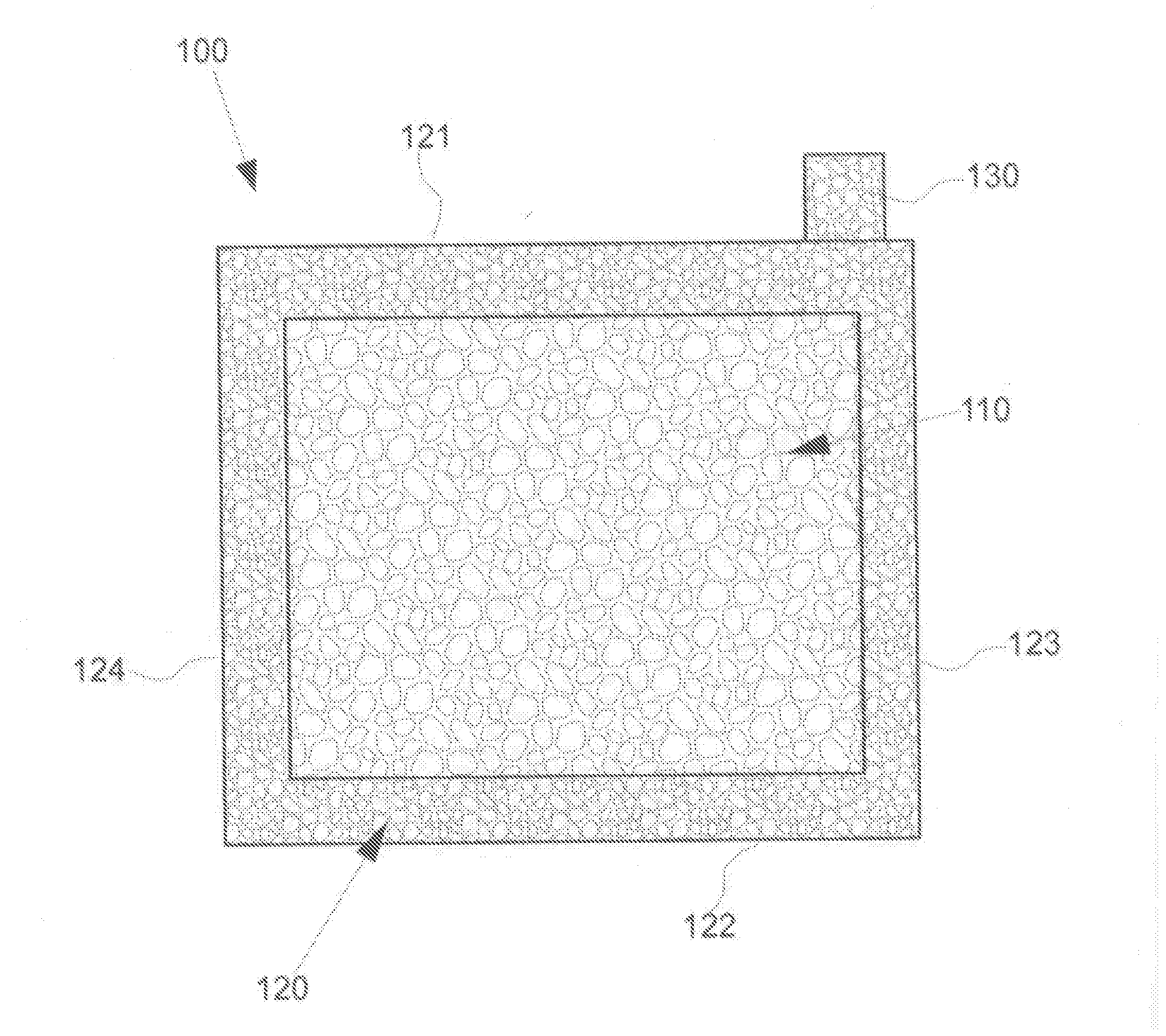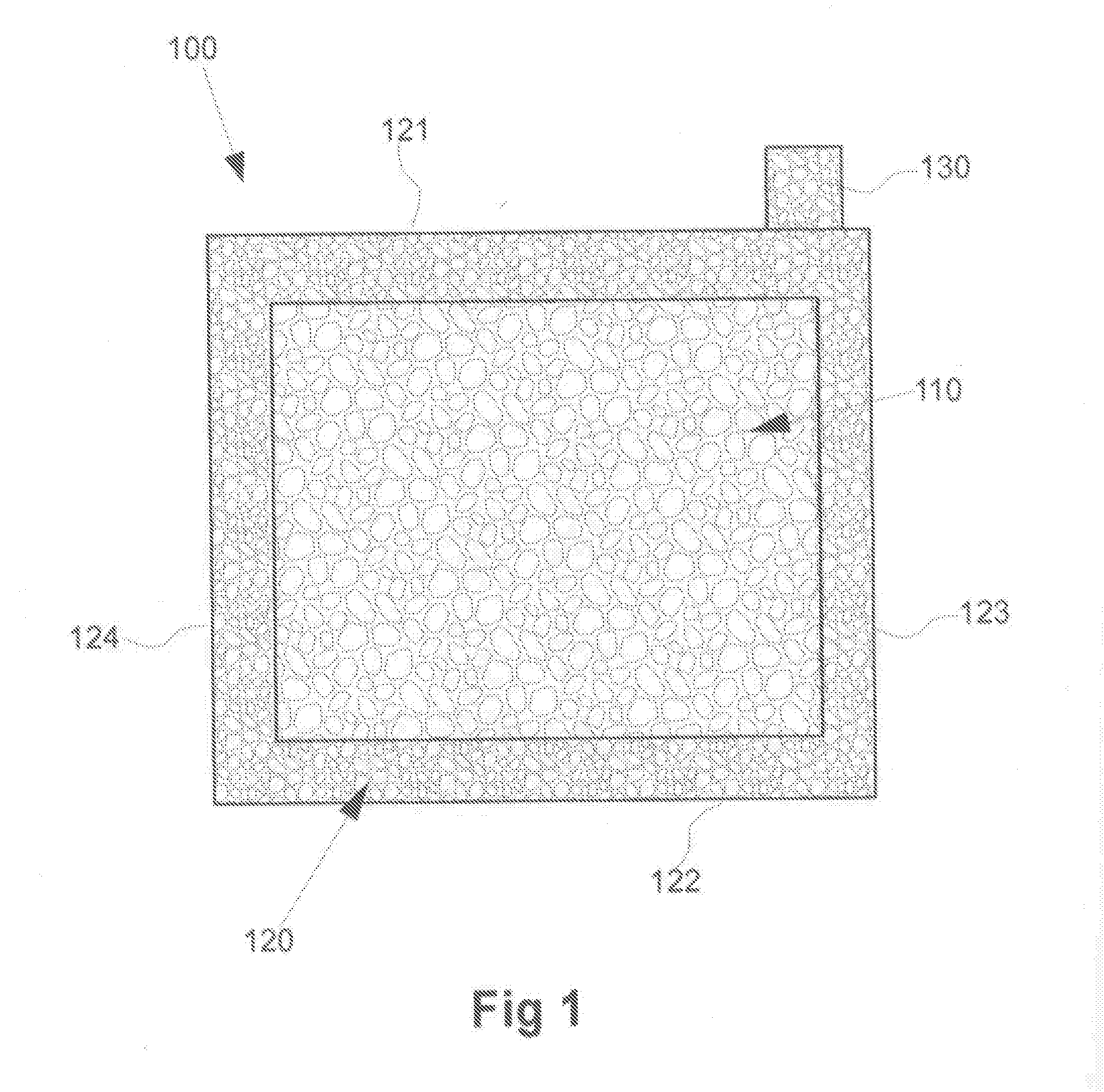Multiply-conductive Matrix for Battery Current Collectors
a current collector and multi-conductive technology, applied in the field of current collectors/electrodes for batteries, can solve the problems of reducing the energy density of the battery, and negate any weight savings achievable, so as to improve the energy density and power density, reduce the weight of the battery, and improve the structural integrity
- Summary
- Abstract
- Description
- Claims
- Application Information
AI Technical Summary
Benefits of technology
Problems solved by technology
Method used
Image
Examples
Embodiment Construction
Structure
[0032]References to elements, steps, features, and advantages herein with respect to a particular embodiment do not imply that those elements, steps, features and advantages apply to only that embodiment, or that they apply to all embodiments. Rather, such language is understood to mean that a specific element, step, feature, or advantage described in connection with an embodiment is included in at least that one embodiment. For the sake of clarity, structures, materials, or operations well-known in the art are not shown or described in detail in order to avoid obscuring the many novel aspects of the invention.
[0033]FIG. 1 is an illustration of a single-compartment embodiment of an MCM 100 in accordance with the present invention. The matrix has two distinct regions as indicated by the different fill patterns: body 110, and frame 120. The frame and body are made from two pieces of matrix substrate such as RPUF cut to shape and joined together as disclosed in the “Methods” s...
PUM
| Property | Measurement | Unit |
|---|---|---|
| thickness | aaaaa | aaaaa |
| thickness | aaaaa | aaaaa |
| height×width×thickness | aaaaa | aaaaa |
Abstract
Description
Claims
Application Information
 Login to View More
Login to View More - R&D
- Intellectual Property
- Life Sciences
- Materials
- Tech Scout
- Unparalleled Data Quality
- Higher Quality Content
- 60% Fewer Hallucinations
Browse by: Latest US Patents, China's latest patents, Technical Efficacy Thesaurus, Application Domain, Technology Topic, Popular Technical Reports.
© 2025 PatSnap. All rights reserved.Legal|Privacy policy|Modern Slavery Act Transparency Statement|Sitemap|About US| Contact US: help@patsnap.com



